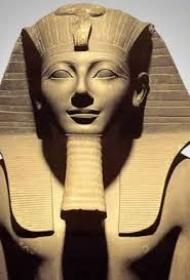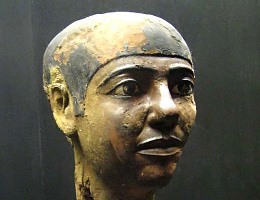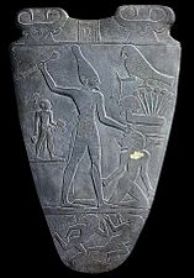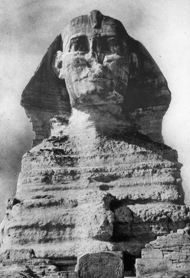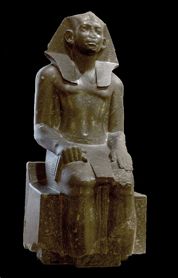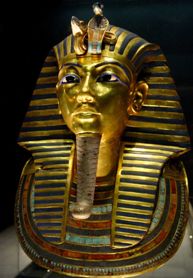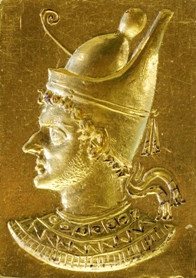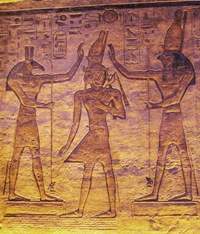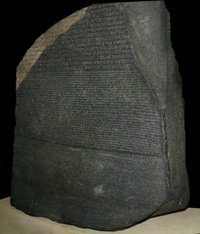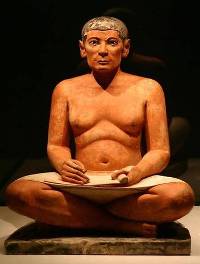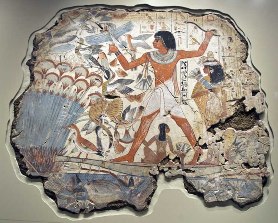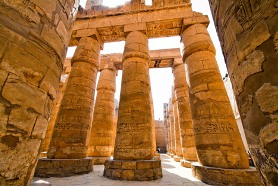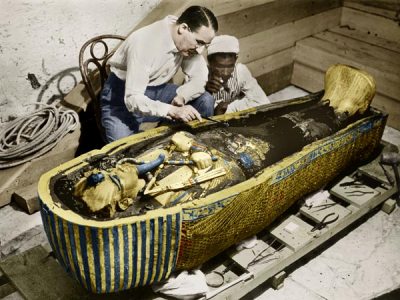| Main » Articles » Статии |
THEMATIC CATALOGUE (EGYPTOLOGY BOOK-FILES):
Dear friends, along these fifteen years (from the beginning of my project - September 2011), due your kind attention to my library collection my site received more than three millions of visits! That is your best acknowledgement for my work to be valuable and useful for all of you! These more than three and half millions of visits here are the best proof for that. This is the complete thematic catalogue of shared on my site egyptology book files - at the moment there are around 7000 title entries (sometimes a lot of them included in one separate publication - as a multi volume series). This catalogue will be ever actualized to be up to date with the newest additions to my book file collection. I will accurately renew the summary and add the new published books to it be ever full and actual according the site publications. So, check regularly this site page and subsidiary sections pages, look for new titles in the list, download the files and enjoy the books! I hope my book file collection will be usefull for all the people loving Ancient Egypt and will be a well accepted contribution in the popularization of egyptology knowledge!
ANCIENT EGYPT: GENERAL STUDIES This division of my book-files Thematic catalogue contains works concerning Ancient Egyptian History, Chronology, Archaeology and Civilisation in general. Here are the most important events and processes in the ages of pharaohs, chronological sequence and dating of them. Presented are general works on ancient monuments and remarcable archaeological sites. A lot of important analyses snape a widespread painting of complicated, multi-leveled Egyptian society and it's achievements for more than three millenia as the oldest and most long lived national state in the world history.
ANCIENT EGYPT IN BIOGRAPHICAL PORTRAITS & ESSAYS This division of my Thematic Catalogue is focused on the Ancient Egyptian Biographies: not only these of the rulers, but also the non-royal ones. Before our eyes appear images of mighty monarchs: well-known or obscure. The great women of Egypt are so not passed aside witouth attention.
PREDYNASTIC AND EARLY DYNASTIC EGYPT This section of my book files Thematic catalogue is focused on Predynastic (before the united state formation) - with important local prehistoric cultures and Early Dynastic (dynasties I-III) Ancient Egypt. In this topic Society and Politics, Economics and External Relations, Archaeology and Art, Culture in general are included. Presented are important researching fields as the country unification process, long distance trade and cultural relations and first stages of hieroglyphic writing system.
This section of my book files Thematic catalogue is focused on the Old Kindgom (IV-VI/or VII dynasties: circa 2686-2181 BCE) and First Intermediate Period (VII/or VIII- part of IX dynasties: circa 2181-2055 BCE) in Ancient Egypt. The different sections deal with history & society, government & administration, archaeology, architecture, art, literature & language, religion. Special attention is paid to the remarcable monuments from this epoch: great pyramids, great Sphinx, other monuments in Giza, Saqqara, Memphis, Abusir, Dahshur etc. This age is the dawn of Egyptian literature too, with the Pyramid texts.
This is the Middle Kingdom division of my Thematic book-files catalogue. It's focused on pharaonic history from the middle of IXth dynasty up the late XIII dynasty (approx. 2040- 1700/1650 BCE), and so including the Second Intermediate Period of the Hyksos invasion (1700/1650-1550 BCE).
This New Kingdom Studies division of my egyptology book-files catalogue is dedicated to the most shining and powerful Ancient Egyptian state ever existed. The historical period between ca. 1550 and 1077 BCE presents a chain of victorious conquests, colossal buildings, wonderful tomb paintings and mysterious tomb treasuries. That is time of great warlords Thutmose III, Sety I, Ramesses II, Ramesses III and Merneptah, female pharaoh Hatshepsut and master of diplomacy Amenhotep III. That is the age of Amarna turmoil and cursed heretic Akhenaten, his beutiful wife Nefertity and boy-king Tutankhamen. In Late Bronze Age world Egypt met the mighty Hittites and pushed back the wave of Sea Peoples. In literature appeared the Book of the Dead.
DECLINE AND SUNSET OF ANCIENT EGYPT: LAST NATIVE PHARAOHS AND FOREIGN CONQUESTS The decline of Ancient Egypt had been so long and illustrious as it's history as whole. That is an era from more than thousand years, including Third Intermediate period (ca. 1069-664 BCE), Late Period (ca. 664-332 BCE), Hellenistic period (332-30 BCE) and epoch of Roman rule until the division of Roman empire as a birth of the Byzantine one (30 BCE-395 ACE). That is a chain of foreign conquerors: Libyans, Nubians, Assyrians, Persians, Greeks and Romans. But that is an era of struggle for national independence and last attempts to keep Egyptian authority in it's former empire in Levant. That is a deep transformation in which this ancient nation accepted to be ruled by foreigners, but overcomed them by it's high culture. The syncretic hellenism gave birth to the phaenomen of Alexandria. Some of the most impressive and well preserved temples and other monuments are built, and the demotic script and coptic alphabet are invented.
From the same distant past Egyptian culture, despite it's relative isolation developed in closest connections with it's neighbors. On the caravan routes or under ship's sails traveled humans, goods and ideas. Pharaonic armies many times conquered the nearby countries, but sometimes are defeated and conquered by them too. Happened and that, the conquerors to be proclaimed as liberators. Finally in each event or process of interaction the vorldwiew scope of the native habitants of Pharaonic land become more and more vide and complex.
ANCIENT EGYPTIAN SOCIETY AND SOCIAL ACTIVITIES The popular image of Anciet Egyptian society is that of a pyramid, on which top is the pharaoh, under him the administation, priesthood, military commanders and on the bottom is presented the ordinary people. This picture is in general correct, but heavy simplified. The Ancient Egypt had been a civilisation with full flesh and blood, a society consisting of living and life-loving individuals with wishes and dreams similiar to our own. Our knowledge about this society cannot be precise and detailed wihout understanding of such different and important aspects as wars and warfere, economics, trade, urban and village communities, law and social order. The private aspects as everyday life, the family and gender roles, household activities and entertainment must be not neglected in any case.
Here we will meet Egyptian gods and goddesses, will investigate the role of the cult and magic in Egyptian society and in the life of it's separate members, will understand the causes why the priesthood there was so mighty and autoritathive. We will see the astonishing Egyptian temples: from Theban sacred complex to Dendara and Edfu. Will watch in our imagination the magnificent ancient rituals and feasts, abandoned from a long time ago. Special attention is paid to the imaginations of the netherworld and afterlife, Ancient Egyptian funerary culture and ancestors worship, to the rich equipment buried with the mummies of deceased and to themselves. The multiple religious books of this civilisation are too not neglected.
ANCIENT EGYPTIAN LANGUAGE AND WRITING
Ancient Egyptian language is not just an afro-asiatic one. This is an living and acting civilisation tool with one of the oldest original script systems. The Egyptian hieroglyphs are unique not only a breach in information fixing and spreading, but so because this is a kind of art: with the high-style images, remained unchanged trough millenia.
For many people Ancient Egyptian literature is only a corpus of religious books, focused on the afterlife. But nothing could be so far from the truth as this kind of opinion. Yes, the religious books form a large part of Egyptian legacy and everyone is heard about the Book of the Dead, Pyramid or Coffin texts. But the written monuments from the pharaonic age are much more: much more different and much more variable. There are historical texts (chronicles and biographies), wonderful wisdom literature corpus, inspired other many peoples in the Ancient Near East, exciting travel stories, fairy tales, letters and many other genres. That one from the most well preserved ancient literatures in the world.
Ancient Egyptian art is one from the most fascinating aspects of this great civilisation. It is specific, with it's own style, reflected the shining isolation of the country between deserts and seas. Differend kinds of art are developped to perfection there for millenia: sculpture and reliefs, painting and jewelry, glassware and embroidery and many others. The museum collections in Egypt and all around the world make these treasures accessible to everyone and spread the legacy of this wonderful culture.
ANCIENT EGYPTIAN SCIENCE & TECHNOLOGIES One significant speech from the lips of Zakar-Baal, king of Byblos in the famous Story of Wenamun declares, that according common opinion Egypt is created before all the lands and all science and craft are spreaded from there. And definitely there is a grain of truth in this speech: Ancient Egyptians are first in many directions of science. They are fantastic mathematicians and wonderful astronomers. Their knowledge in human anathomy made them great physicians known even in far away Hittite empire. The images in their tombs demonstrate deep understanding in zoology and botanics.Their craftsmen taken undisputedly the first place in the world for the period, when Ancient Near East culture dominated. In stoneworking, metallurgy, glass and textile production they had been the best masters. The mummification is their specific and absolutely original kind of craft.
ANCIENT EGYPTIAN ARCHITECTURE & REMARKABLE MONUMENTS Probably the most astonishing aspect of Ancient Egyptian Civilisation are the gigantic stone buildings - a true miracle in architecture. Despite deep antiquity and honest technological level, they serve as an absolute proof of capability what owned Ancient Egyptian society and for deep authority, what obtained the ruling class over the lower social strata. But these splendid archaeological objects could not be completed withouth sofisticated knowledge of ancient architects, mathematicians, administrators drawing the right direction for these unvelievable hudge efforts of a whole culture. Due their honest service, our world can enjoy with deep respect to the piramids, temples, ornamented tombs and other monuments in different parts of this country.
From the same beginning of history and ever before, Egypt had been, is and will be a gift of the Nile. The egyptians obtained full understanding for thsi fact and trough all periods of their history they percepted a worldview imaging their lad as unique, separated from all world around and simultaneously it's geographic, cultural and mythical center. The Nile valley is surrounded by deadly deserts and seas and had natural borders serving as invincible strongholds - hard to be passed from each side. Altough, egyptians proved themselves as glorious conquerors and brave sailors, collecting taxes and gifts, goods and ideas from the whole region beyond their own land.
The egyptology is one of most inspiring and astonishing kinds of science. This discipline is forming for alredy almost three centuries on the basis of wonderful combination of archaeology, anthropology, sociology, history and related disciplines.There are a chain of admirable adventures in "Indiana Jones" style, but so slow, detailed and monotonous catalogizing of artifacts and accumulating of the data. The excavations in general seem to the archaic efforts of pharaonic wokrers, but once the artifacts are unburied from the soil, in their analysis take part the ultimate technologies and most advanced engineering devices.
| |
| Views: 15623 | Comments: 1 | Rating: 5.0/1 |

